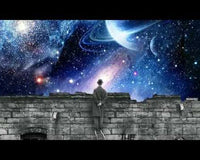I have adored astronomy for as long as I can remember. I was a member of the Planetarium Club in middle school, and this passion drove me to enter the Air Force and the field of aviation. So on July 12th, I, like so many others, eagerly anticipated the first five scientific images released to the public from the James Webb Space Telescope (JWST). I had to catch my breath and take a knee when I saw them. Before I go further, let me share a little bit about the JWST's origin and purpose.

The JWST took over from its predecessor, the Hubble Space Telescope (HST), which was named after the legendary astronomer Edwin Hubble. The JWST is named after James Edwin Webb, one of the most significant pillars of NASA's success and early fame in space missions. This creation is a $10 billion satellite that took decades of research and innovation to develop and primarily looked at the universe in infrared. The Hubble studied it primarily at optical and ultraviolet wavelengths (though it has some infrared capability). Webb also has a much bigger mirror than Hubble. This larger light collecting area means that Webb can peer farther back into time than Hubble is capable of doing.

Everything in life presents rich leadership lessons, and these satellites and accompanying images are no exception. Just look at the difference seen when viewing objects by capturing visible light versus infrared. We are peering into the soul of the cosmos, seeing the actual energy within and from where it radiates. As leaders, we should be doing the same with all the stars in our organizational galaxy (notice how I said galaxy and not cluster!)

Team members may appear one way to the visible eye. But real leaders look deep within the individual to see what lies beneath the surface and what drives their passion. Are they ready to give up and collapse on themselves like a black hole? Are they about to supernova to new energy and brilliance? Or are they one of the myriads of stars that fill the firmament with light and activity?

While I was over the moon with the pictures I saw, these are images of matter, not life. Human beings have life. They are more than a contained soup of water, carbon, and DNA mixed together with a gravitational spoon. There is no comparison. And how much more critical are human spirits than cosmic stars? Galaxies don't have missions, but enterprises do. So if I get excited about beautiful images of things beyond my reach, can I get as energized about the spirits of those I interact with daily?

When I was younger, I dreamed of being an astronaut launched on a one-way mission to explore the universe for the duration of my life. Now that I am older, I realize that the meaning of the universe is on terra firma, serving, loving, and sharing with my fellow human beings.

Thank you, JWST, for the lessons you taught me. I see the wonders of all that is beyond me only to embrace the creation of that which is within me. And may I spend all my years igniting my stellar fellers and galactic gals in ways never seen before.








